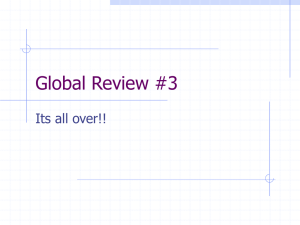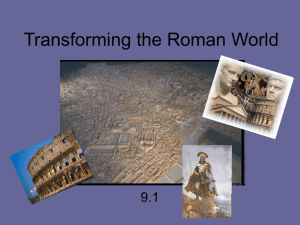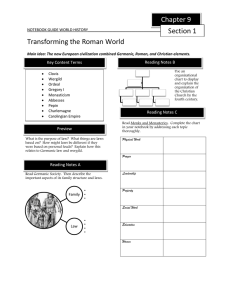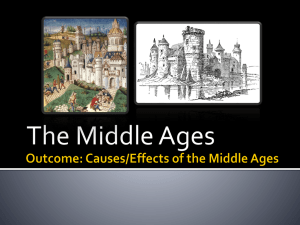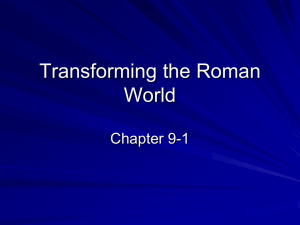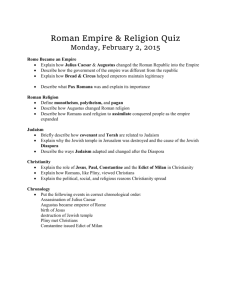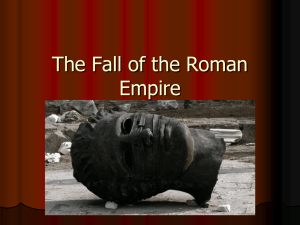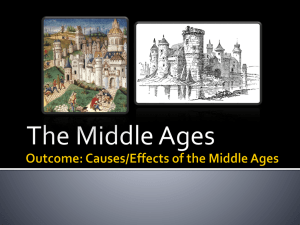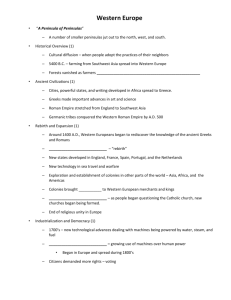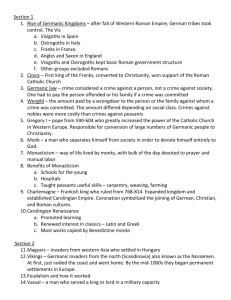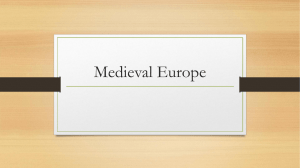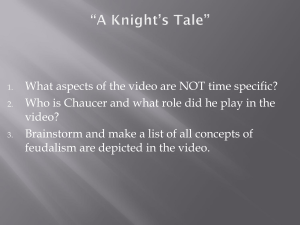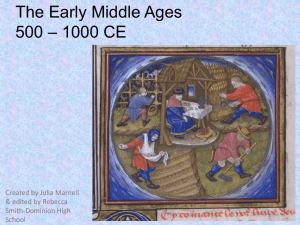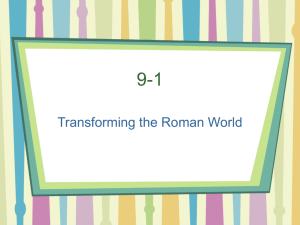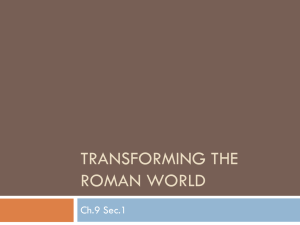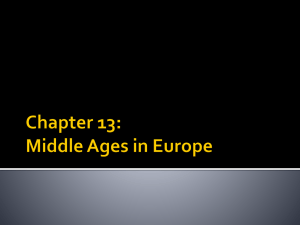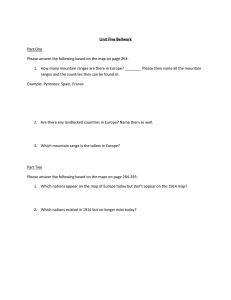ESL World Studies – Europe Study Guide Study the map of Europe
advertisement
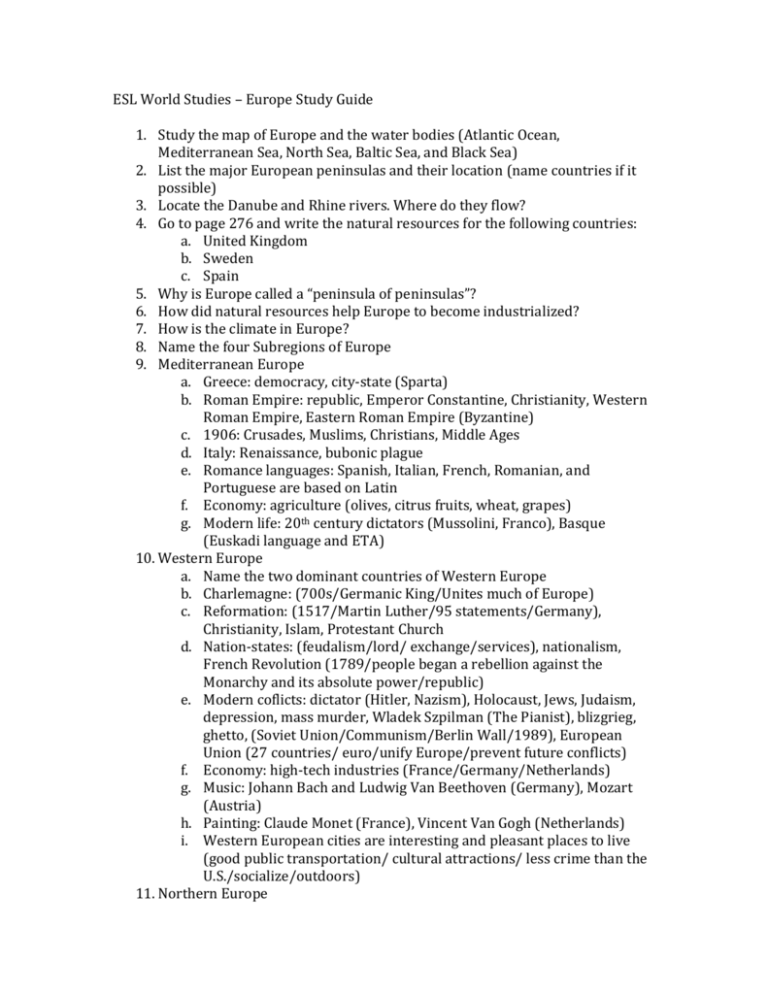
ESL World Studies – Europe Study Guide 1. Study the map of Europe and the water bodies (Atlantic Ocean, Mediterranean Sea, North Sea, Baltic Sea, and Black Sea) 2. List the major European peninsulas and their location (name countries if it possible) 3. Locate the Danube and Rhine rivers. Where do they flow? 4. Go to page 276 and write the natural resources for the following countries: a. United Kingdom b. Sweden c. Spain 5. Why is Europe called a “peninsula of peninsulas”? 6. How did natural resources help Europe to become industrialized? 7. How is the climate in Europe? 8. Name the four Subregions of Europe 9. Mediterranean Europe a. Greece: democracy, city-state (Sparta) b. Roman Empire: republic, Emperor Constantine, Christianity, Western Roman Empire, Eastern Roman Empire (Byzantine) c. 1906: Crusades, Muslims, Christians, Middle Ages d. Italy: Renaissance, bubonic plague e. Romance languages: Spanish, Italian, French, Romanian, and Portuguese are based on Latin f. Economy: agriculture (olives, citrus fruits, wheat, grapes) g. Modern life: 20th century dictators (Mussolini, Franco), Basque (Euskadi language and ETA) 10. Western Europe a. Name the two dominant countries of Western Europe b. Charlemagne: (700s/Germanic King/Unites much of Europe) c. Reformation: (1517/Martin Luther/95 statements/Germany), Christianity, Islam, Protestant Church d. Nation-states: (feudalism/lord/ exchange/services), nationalism, French Revolution (1789/people began a rebellion against the Monarchy and its absolute power/republic) e. Modern coflicts: dictator (Hitler, Nazism), Holocaust, Jews, Judaism, depression, mass murder, Wladek Szpilman (The Pianist), blizgrieg, ghetto, (Soviet Union/Communism/Berlin Wall/1989), European Union (27 countries/ euro/unify Europe/prevent future conflicts) f. Economy: high-tech industries (France/Germany/Netherlands) g. Music: Johann Bach and Ludwig Van Beethoven (Germany), Mozart (Austria) h. Painting: Claude Monet (France), Vincent Van Gogh (Netherlands) i. Western European cities are interesting and pleasant places to live (good public transportation/ cultural attractions/ less crime than the U.S./socialize/outdoors) 11. Northern Europe a. Name the Nordic countries b. Early conquerors: Celts, Romans, Germanic tribes (Anglo Saxons), Vikings c. Government: parliament, Althing (Iceland), Magna Carta (inspired other people to demand their rights), English Bill of Rights (free elections/parliament has more power than the monarchy), female representation d. Industrial revolution: Great Britain (first nation), industrialization, national resources, coal, iron ore, steel, machineries, 75% of children and women were workers, machine substituted men e. Ireland: Protestant Church, Catholic Church f. Economy: Iceland (fishing industry), Sweden (timber), Norway (North Sea oil) Scotland (Silicon Glen (computer silicon chips)) g. European Union: 27 countries/ euro (currency)/unify Europe/prevent future conflicts h. Culture: no diversity, except in the United Kingdom i. Languages: Most Northern Europe speaks Germanic language (based on German); Celtic (Gaelic and Welsh) j. Literature: William Shakespeare (400 years) and Henrik Ibsen (The Hall of the Mountain King by Edward Grieg) k. Customs: Tea (China/eliminate germs in water/sandwiches and cookies); smorgasbord (buffet style food serving) 12. Eastern Europe a. Cultural crossroad: ethnic groups, movement of ideas, goods, and people b. World War I: A Serb (Gavrilo Princip) killed an Austrian noble (Archduke Franz Ferdinand), alliances, Allies, Central Powers c. Balkanization refers to the process of region breaking up into small and hostile units d. Soviet Union: Communism, satellite nations, Mikhail Gorbachev (1980/reforms) e. Economy: traditional economic system, command economic system, market economic system f. Culture: many ethnic groups, folk art, folk music, g. Modern Life: anti-Semitism, Jew, Judaism 13. Essay: Which place would you like to visit in Europe?

